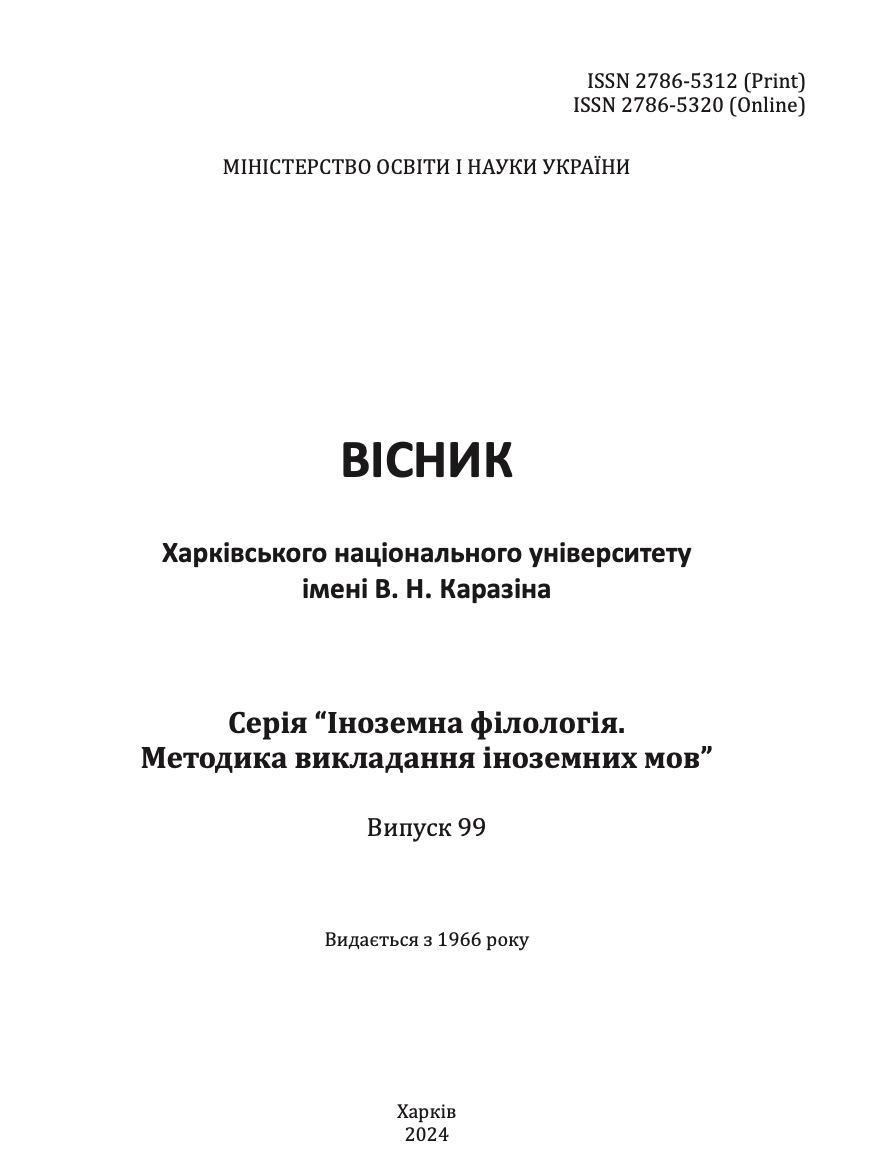Image and verbal text interfaces of internet memes: a cognitive analysis
Abstract
The article focuses on image-text interface types of Internet memes mocking the same viral event – Melania Trump’s speech at the Republican Party convention. The future first lady’s address contained borrowings from Michelle Obama’s speech at the Democratic Party convention. The relevance of the study is accounted for both by the social significance of visual-verbal Internet memes as a tool influencing the formation of the Internet users’ views and by the need to elucidate the principles of interaction between the verbal and visual modes of memes in creating a humorous effect, which is the aim of the study. The application of cognitive linguistics methods, in particular, the tools of the theory of conceptual integration for multimodal analysis of communication, made it possible to establish four types of visual and verbal text interfaces. It has been concluded that simple visual-verbal metonymy underlies memes, in which the humorous effect is achieved through the interaction of an image that provides access to a viral event mocked by the meme and a verbal text that activates a certain metonymic association highlighting a feature of the event that is incompatible with the expectations provided by the generic space of the viral event. In memes built on the basis of visual metonymy and verbal allusion, incompatible conceptual structures are activated with the help of allusive connection. Radial visual-verbal metonymy occurs when an image engages a series of metonymic features linked by a radial semantic link, whereas the verbal text highlights the incompatibility of these features with the actual features of the viral event. The interaction of allusion and diffuse visual-verbal metonymy is the cognitive basis of memes, in which access to a viral event is provided by verbal allusion, while the image contains signs of absurdity and triggers metonymic associations that are not based on expected connections.
Downloads
References
Dancygier, B., & Vandelanotte, L. (2017). Internet memes as multimodal constructions. Cognitive Linguistics, 28(3), 565–598. https://doi.org/10.1515/cog-2017-0074
Dawkins, R. (2006). The selfish gene. Oxford: Oxford University Press.
Fauconnier, G. & Turner M. (1998). Conceptual integration networks. Cognitive Science., 22(2), 133–187.
Hockett, C. (1960). Logical considerations in the study of animal communication. In W. Lanyon & W. Tavogla (Eds.), Animal sounds and communication (pp. 392–430). Washington, D. C: American Institute of Biological Sciences.
Johann, M. (2022). Political participation in transition: Internet memes as a form of political expression in social media. Studies in Communication Sciences, 22(1), 149–164. https://doi.org/10.24434/j.scoms.2022.01.3005
Johann, M., & Bulow, L. (2019). One does not simply create a meme: Conditions for the diffusion of Internet memes. International Journal of Communication, 13, 1720–1742.
Koestler, A. (1964). The act of creation. London: Hutchinson.
Kovalenko, L., & Martynyuk, A. (2019). Conceptual blending tools of parody translation analysis, In Translation Today: National Identity in Focus. Studies in linguistics, Anglophone literatures and cultures. Vol. 24. Berlin: Peter Lang GmbH, 173–182.
Kress, G. (2010). Multimodality: A Social Semiotic Approach to Contemporary Communication. Routledge, London.
Laineste, L., & Voolaid, P. (2016). Laughing across borders: Intertextuality of internet memes. European Journal of Humour Research 4(4), 26–49. https://doi.org/10.7592/EJHR2016.4.4.laineste
Lexico. (n.d.). Retrieved from https://www.lexico.com/
Martynyuk, A. (2017). The art of metaphoric political insult within the cognitive framework. In E. Chrzanowska-Kluczewska & O. Vorobyova (Eds.), Language – literature – the arts: A cognitive-semiotic interface (pp. 245–261). Frankfurt am Main & Bern: Peter Lang Edition.
Martynyuk, A., & Meleshchenko, O. (2019). Twitter-based multimodal metaphorical memes portraying Donald Trump. Lege Artis. Language Yesterday, Today, Tomorrow, 4(2), 128–167.
Nabokova, I. Yu., Martyniuk, A. P. (2023). Naratyvy i radial’ni katehorii, scho ikh orhanizuiut’ (na materiali naratyvu zakhidnykh ZMI pro Melaniiu Tramp). [Narratives and radial categories structuring them (based on the western mass-media narrative about Melania Trump)]. Visnyk Kharkivskoho natsionalnoho universytetu imeni V. N. Karazina [The journal of V. N. Karazin Kharkiv National University], 97, 30-36.
Ross, A. S., & Rivers, D. J. (2018). Internet memes as polyvocal political participation. In D. Schill & J. A. Hendricks (Eds.), The presidency and the social media: Discourse, disruption, and digital democracy in the 2016 presidential election (pp. 285–308). New York & London: Routledge.
Shifman, L. (2014). Memes in digital culture. Cambridge: The MIT Press.
Suls, J. M. (1972). A two-stage model for the appreciation of jokes and cartoons: An information processing analysis. In The psychology of humor: Theoretical perspectives and empirical issues. Goldstein, J.H. & McGhee, P.E. (eds.). New York – London: Academic Press, p. 81-10.
Wiggins, B. E., & Bowers, G. B. (2015). Memes as genre: A structurational analysis of the memescape. New Media & Society, 17(11), 1886–1906. https://doi.org/10.1177/1461444814535194




